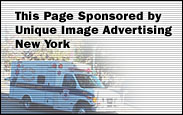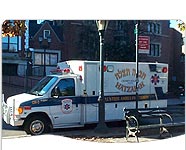 
Lightning Safety
Approximately 400 people are struck by lightning each year in the United States. The U.S. Centers for Disease Control and Prevention recommends the following steps to prevent death or injury
- When playing or working outdoors, be mindful of weather reports of thunderstorms, especially during the thunderstorm season;
- Take steps to protect yourself before it actually starts to rain, as lightning sometimes starts before rain begins;
- If you hear thunder, avoid standing near trees or tall objects;
- Avoid high ground, water, open spaces, metal objects such as golf clubs, umbrellas, fences and tools;
- When indoors, turn off appliances and other electronic devices and stay inside until the storm passes;
- If you see someone struck by lightning who is suffering cardiac arrest, begin CPR immediately and CALL 911.
Avoid Being Struck by Lightning
A thunder and lightning storm is better than any Fourth of July firework show. Unfortunately, lightning is a serious threat to safety. Lightning causes about 100 deaths per year. No matter what your outdoor activity may be, keep an eye and an ear to the sky. Be alert for darkening skies, flashes of light, or thunder.
Flash-to-Bang
You should know the "flash-to-bang" method of measuring how far you are from lightning. Because light travels much faster than sound, the time between a lightning bolt and thunderclap will tell you how far away the lightning actually is. Each 5-second count equals one mile. In other words, after seeing a lightning flash, count the seconds until the thunder is heard. Divide the seconds you counted by five.
Here is an example: you are on the golf course several fairways from the clubhouse when the skies darken and the wind increases-both signaling an approaching storm. You see a lightning flash and you begin to count: one-one-thousand, two-one-thousand, three-one-thousand, until you've counted to 10 when a clap of thunder is heard. Dividing the 10 seconds by 5 yields 2. The lightning is 2 miles away from you.
30-30 Rule
Whenever the count in seconds reaches 30 seconds or less (6 miles or closer), you are in danger and should seek shelter. Those on a golf course or with long transportation times to get to shelter should use even a longer time period.
It is not uncommon for a portion of the sky to be blue when lightning hits. At least 10 percent of lightning strikes occur when it is not raining. It is easy to underestimate the danger at the end of storm. Outdoor activities should not be resumed until at least 30 minutes (the second 30 in the 30-30 rule) after the last lightning is seen or the last thunder heard.
Shelters
Avoid golf shelters, bus shelters, and rain shelters, which may increase the risk of a lightning strike, depending on the size and height of the building. Tent poles may act as lightning rods. All-metal vehicles (not convertibles or Jeeps) provide safety because the automobile will diffuse the current around the occupants to the ground. It is a myth that rubber tires provide insulation, but it is true that the metal body affords some protection.
If a safe location is not available and a group of people is exposed, they should spread out and stay several yards apart, so that in the event of a strike, the fewest number of people are injured. Stay away from metal objects, such as motorcycles, tractors, fences, and bicycles, and any object that is taller than you. Avoid areas near power lines, pipelines, fences, ski lifts, and other structural steel fabrications.
If you are unable to find a safe location, do not stand near tall isolated trees, or on hilltops. In a forest, seek a low area under a thick growth of small trees. Seeking a clearing to avoid tall trees makes the person the tallest object in the area and more likely to be struck. Avoid haystacks or other objects that project above the ground. Shelter under a small outcropping or overhang may increase the risk of being struck since lightning energy that has hit a hill tends to flow through the heavy downpour and literally "drip" onto the person with the rain. If totally in the open, stay far away from single trees.
Lightning Position
The Lightning Safety Group recommends what you can immediately do when endangered. Squat with both feet close together and the ears covered by the hands to avoid acoustic damage. This position minimizes a person's height and the area touching the ground. This position is similar to a baseball catcher's stance or squat. One problem with this position is that people and especially older persons may have a difficult time holding this squatting position for more than a few minutes. Should this be the case, you might try kneeling on the ground or sit cross-legged-both are easier to maintain and both maintain little contact with the ground. Do not lie down!
Indoor Protection
If indoors during a thunderstorm, avoid open doors and windows, fireplaces, and metal objects such as pipes, sinks, and plug-in electrical appliances. Do not use the telephone (unless it is a cell phone) or computer. Clothesline poles and fences may act as lightning rods and transmit lightning along the line or wire.
Water Protection
If you are on the water, head for the shore. Water is an excellent conductor of electricity. Avoid swimming, boating, or being the tallest object near a large, open body of water. Lightning will usually strike objects projecting above the surface of the water and can flow through the water to injure swimmers. Boaters unable to get off the water before the storm should crouch low in the boat. Once on land, get at least 100 yards away from the water.
First Aid
Many myths about lightning persist, including the idea that lightning strikes are always fatal. Studies indicate that lightning strikes carry a mortality rate of 30 percent. Always check an unresponsive lightning strike victim for breathing and circulation. People who have been hit by lightning carry no electric charge and can be touched. Victims who appear to be dead can often be revived. If both breathing and circulation are absent, begin cardiopulmonary resuscitation (CPR) and seek immediate medical attention by calling 9-1-1.
The above is for general informational purposes only. Always consult your
physician regarding specific medical issues and call Hatzalah or your local
ambulance service in the event of an emergency.
Back to Safety Tips Index
|









